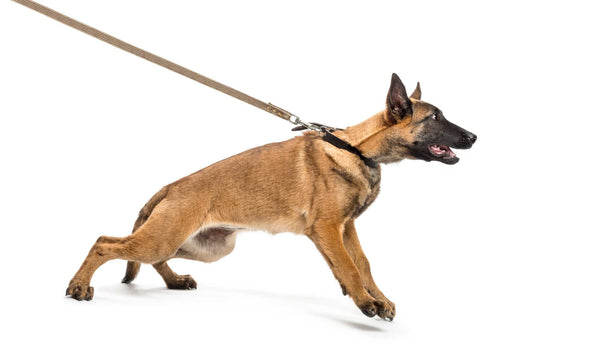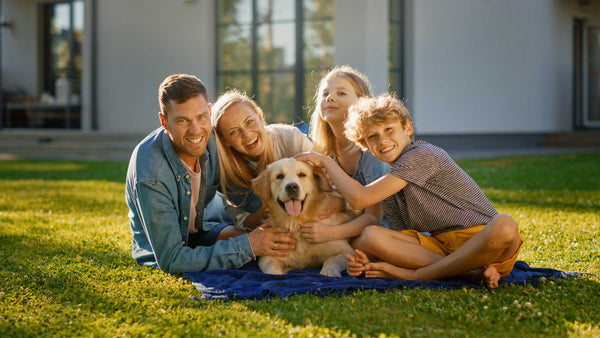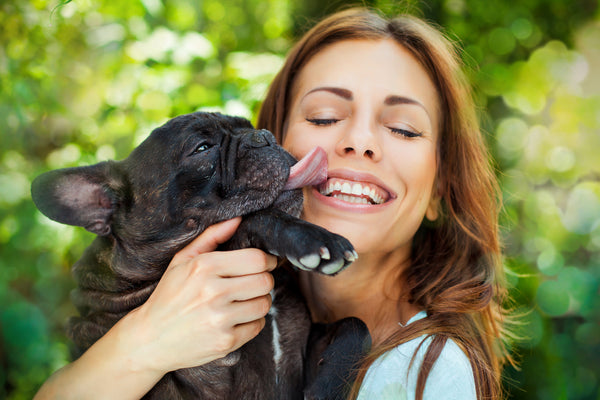How much exercise should your dog get?

Dog owners are often unsure how much their dogs should exercise, which makes sense because not only is there a lot of conflicting information out there, but there are many factors that contribute to the answer. The appropriate amount of exercise for your dog is dependent on their breed, health, age, and their specific energy levels as an individual. Typically, the recommended amount of exercise will be somewhere between thirty minutes to two hours per day depending on these factors. Some breeds need substantially more exercise if they were bred for active lifestyles and certain jobs, and if they are unable to have these needs met, they may develop undesirable behaviors. A Husky puppy will require an entirely different exercise regimen than a fifteen-year-old chihuahua for instance. So, let’s talk about how much exercise your dog could benefit from and the signs to look for when they may be in need of more.
Breed:
First, always familiarize yourself with your dog’s breed and how it relates to their temperament, energy, and overall lifestyle. There will be many specific traits your dog possesses depending on their breed, not just in terms of exercise but their nature as a whole. If you have a mixed breed or are unsure of your dog’s breed, then evaluate the component breeds that are part of their DNA makeup and plan their care accordingly. Then, from there, you can tailor their plan further by how they respond individually. You can also consult with your vet about their breed and even consider a home or vet administered DNA kit to become better acquainted with their breed-specific needs.
Health:
Similar to humans, exercise is dependent on our overall health, risks, and predispositions. Some dogs may have diseases or disorders, whether they be genetic or developed from outside circumstances. So, even if you have an active breed who would benefit from an abundance of exercise if they were in the normal health range, if they have heart or other organ issues, or possibly joint or appendage issues, then their exercise would have to be tailored accordingly.
Age:
Age might be a factor for any activity your dog engages in. The younger we are the more active we tend to be and may be better suited to handle rigorous exercise, even finding it necessary. However, once aging is underway, we can become slower, fatigue more easily, lose mobility, plus we start to develop age-related health problems such as arthritis or other joint issues. This all impacts the amount of exercise we can partake in, as well as the rigor of it. There is very little difference for how aging affects a dog’s exercise in comparison to how it affects humans.
Signs that your dog might be in need of more exercise:
We can’t base exercise needs solely on breed, age, and health, though they should all be taken into consideration. Sometimes our dog might exhibit different energy levels than what is considered “normal” for their breed even if they’re in perfectly good health, so it’s always a good idea to know your dog as well as you can to help them live a healthy and fulfilling life. This doesn’t only go for their exercise needs, but their comfort and the way they engage in the world as a whole.
If your dog is constantly trying to initiate play with you while you’re relaxing, then they might need more exercise during the day. Dogs who are exhibiting signs of boredom might also benefit from a greater amount of exercise. For instance, if they are constantly raiding the trash, knocking items over, ripping and tearing pillows or toilet paper, and destroying electronics or other household items, these are common signals for boredom or stress. Once you evaluate the cause, and if you determine that your dog is in fact bored, then consider how much exercise they have gotten that day. If this is a regular occurrence for them and they are not getting their energy out with exercise like playtime, fetch, running, or walking then chances are that implementing more exercise daily is a good idea.
Nighttime activity is also an indicator that more exercise could be needed. If a dog is satisfactorily exercised then they should be able to sleep through the night without disruption (as long as they are not experiencing other issues like upset stomach, weather-related stress, and so on). Another possible sign they are in need of more cardio stimulation is constant barking (again, if the barking does not have another clear source like someone at the door or an animal scurrying by outside).
If your dog is crated during the day while you are out for long periods of time, you will definitely want to ensure that they are adequately exercised before heading to their crate to relax. If they are already feeling restless before being crated, then the stress of being confined to that one area for hours could become overwhelming. However, if they are exercised and satisfied, then their crate might feel like a nice haven. Keep in mind that when they are crated, they can’t get movement in that they might otherwise if they were roaming the house, which might not seem like much exercise, but it does contribute to their daily mobility and motion. If your dog is crated each day, then that should be another factor in determining how much exercise they need.
If your dog exhibits these types of behaviors discussed without any other clear reason as to what could be the cause, then try experimenting with more exercise and see if their behavior changes. Experimenting with your dog’s daily regimen to find what works best is important. This goes for exercise as well as their daily lives in general since they all have specific needs that can’t be determined solely based on their breed, age, and health.
Types of exercise that are healthy and beneficial for your dog:
- Walks with varying durations and speeds. Find what works best for your dog and how many walks a day they will need for what length of time and at what level of briskness. They will usually need a longer walk more than just once during the day as they will have had time to recover from the first one and will desire more exercise again later—but, as always, that is dependent on the dog.
- If your dog is more active with higher energy levels, then they may need to run for a duration of time instead of only walking as they will not get enough energy out without more rigor in their exercise routine.
- Dog park. The dog park is a great way to let your dog exercise and socialize at the same time. Our tip is to always use caution and keep an eye on your dog when at the park as you never know if dogs who are unacquainted might be set off, or if they’ll join in on simple scuffles that escalate when more dogs become involved. Aside from the needed attentiveness, the dog park is an excellent way for dogs to exercise!
- Fetch and other games or sports. Some dogs just love to play fetch and engage in other activities with their humans. These are great ways to get your dog exercising while also allowing you to bond with them.
- If you have a dog who loves to swim, then this is another great option for their exercise routine as long as the weather permits. Not much brings more joy than watching a happy dog paddling away in the summer!
Now you have a bit of an idea about how to assess the amount of exercise your dog needs. Take into account their breed, age, and health. Look for behavioral signs of boredom or restlessness. Take into consideration their daily routine when you are out of the house and how much movement they have gotten in on their own. And always experiment to find out what works best for your own individual and special furry friend! All dogs are different and have different energy levels, and all dogs need exercise to some extent even if not vast amounts in comparison to other dogs. Watch and listen to their signals and look to improve upon their routines so they can live the happiest, healthiest, best lives possible! All any of us dog-lovers want is a great life for our pups, after all.
 Shay Siegel is a young adult author, freelance writer, and editor from Long Island, NY. She has a BA from Tulane University and an MFA in Writing from Sarah Lawrence College. Always a lover of animals, Shay had several cats growing up. She's now a dog mom to the snuggliest rescue pit bull, Bernie. She enjoys writing on a variety of topics and sharing her love and knowledge of animals with others!
Shay Siegel is a young adult author, freelance writer, and editor from Long Island, NY. She has a BA from Tulane University and an MFA in Writing from Sarah Lawrence College. Always a lover of animals, Shay had several cats growing up. She's now a dog mom to the snuggliest rescue pit bull, Bernie. She enjoys writing on a variety of topics and sharing her love and knowledge of animals with others!

Ready to gain some healthy superpowers?
Looking to support your dogs immune system or digestive health? Need joint or calming support?
Let Waggy Show you the way

